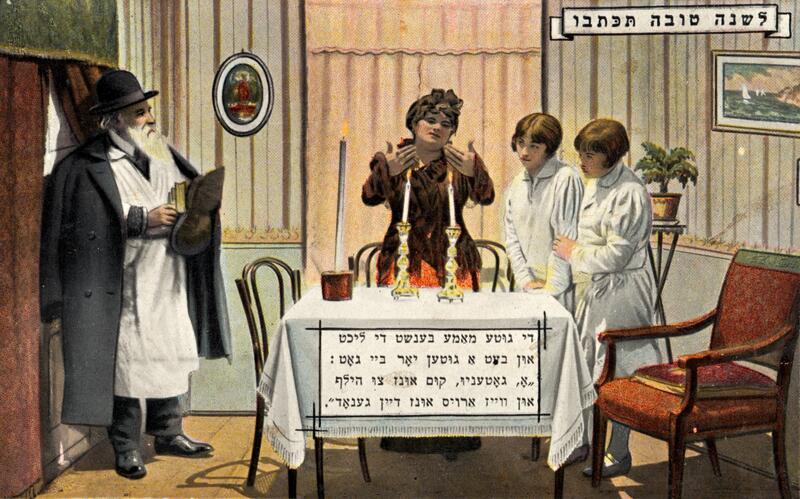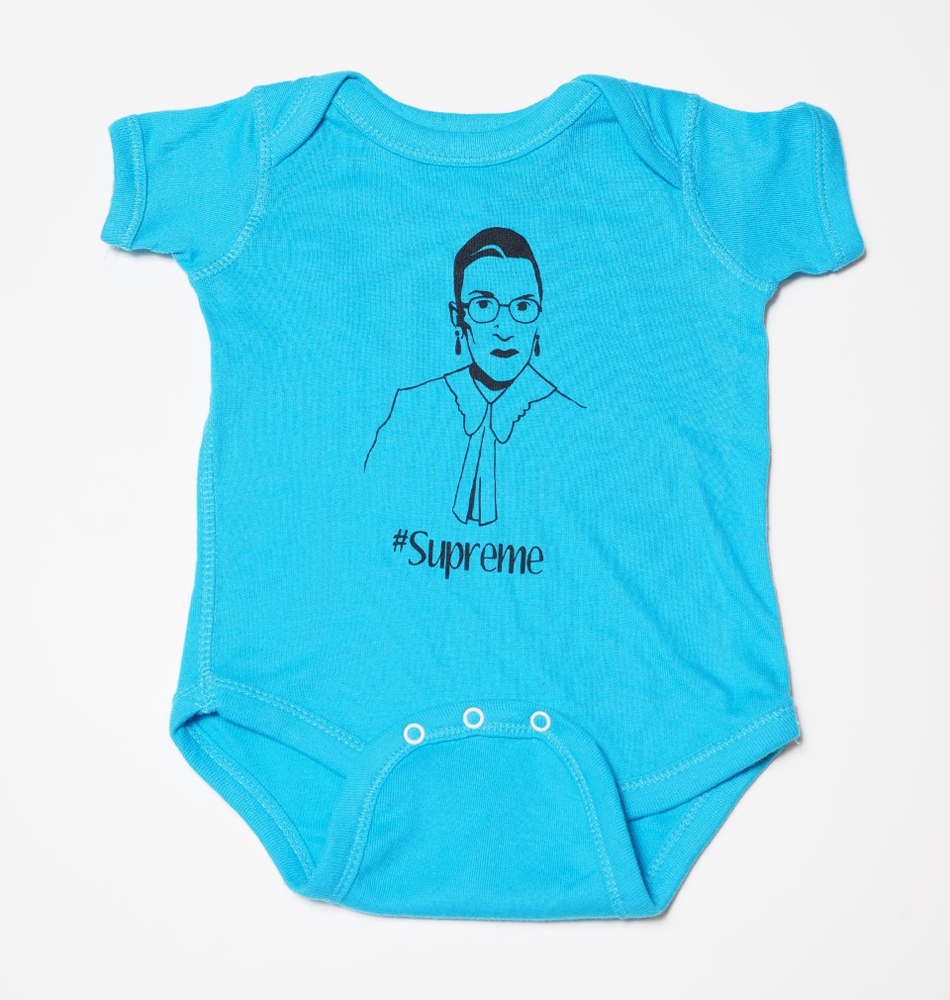Frolicking Maidens and the Hidden History of the Kittel
Each year before the High Holidays, my grandmother washed and ironed my father and grandfather’s kittels, the plain, white, robe-like garments that men wear for Yom Kippur and the Passover seder. She didn’t trust the washer and dryer with this important task, so she washed them by hand. They appeared every year of my childhood like white, almost translucent ghosts, hanging on the laundry line in our basement. For me, it was a sign of the somber holiday of prayer and fasting to come.
As a child growing up in a modern Orthodox, multi-generational household, it was a given that the kittels had nothing to do with me, a girl. Just as the tallit, the tefillin, and the kippah were the exclusive domain of men, so too was the kittel. Women had no distinctive white garments to wear for the holidays. For some reason, though, in that windowless basement, I was drawn to the kittels and their whiteness. When my grandmother found me staring at them, she said, “when you’re a kala (a bride), you’ll buy a kittel for your groom.” But that attempt to connect me, as a woman, to the kittels only left me feeling as though something was missing from the story.
Fast forward a few decades, after both my parents had passed, to the afternoon when a friend and I were packing up my parents’ belongings. In the midst of their cherished books, furniture, and clothing was a simple cardboard box containing two wrapped and carefully folded kittels. One had belonged to my father; the other, my grandfather. “Keep or give away?” my friend asked, but I found myself unable to answer her question. Should I keep them? Did I even want to keep them? I realized I knew so little about their history and why they were worn. It was then that I knew that I could only find my answer by researching and understanding their origins.
I learned that the Ashkenazi tradition of wearing a kittel goes back to the twelfth and thirteenth centuries. Made out of plain white fabric without pockets, the robe is tied with a simple fabric belt. Some are embroidered, but only with white or silver thread, never with colorful or gold thread.
I discovered many explanations for the kittel: new age, rabbinical, and historical. Contemporary theorists offer that white is a “blank canvas” for the start of the New Year or that wearing white is like being an angel. Because the kittel is also worn under the chuppah (the marriage canopy) and resembles a Jewish shroud, rabbinical interpretations believe that it is a connection between life, death, marriage, and the holidays. A more historical explanation comes from the time of the Biblical High Priests, who wore colorful and elaborate gold garments in the Holy Temple throughout the year, but would always wear a white garment on Yom Kippur.
Then, I found a quote by Rabbi Shimon Ben Gamliel from the Mishnah. “There were no days as joyous for the Jewish people as the fifteenth of Av and Yom Kippur, as on them the daughters of Jerusalem would go out in white clothes…and the maidens of Jerusalem would go out and dance in the vineyards.”
Daughters and maidens? Joy and dancing in the vineyards? Suddenly, that revelation felt as though something in my past had been reborn.
I continued reading and learned that, during the time of the First and Second Temples, single women danced in borrowed, white garments on Yom Kippur to attract the attention of unmarried men. However, after the destruction of the temples, history turned a page on this and many other Jewish traditions and practices. Yom Kippur itself was no longer “joyous” as described by Rabbi Shimon Ben Gamliel. It became the somber day of fasting and repentance we all recognize today, incorporating the sadness of the Jewish people for the destruction of their temples and their exiles into the Diaspora. With that joy, it seems, so too, the tradition of dancing maidens looking for husbands disappeared. The loss of that tradition felt personal, as though I had lost out on something that had once been joyous and wondrous.
Even harder to discover in my research was that the tradition didn’t only disappear, but it was mocked. It seemed that Orthodox post-Diaspora Judaism could not stomach the idea of the white kittel originating with those joyous ancient women of Jerusalem. Some rabbinical scholars of the eighteenth and nineteenth centuries chafed at the possibility that there ever was such a tradition. They claimed that maidens dancing and singing in the vineyards on Yom Kippur to attract men was ludicrous. Rabbi Israel Lipschitz, in his commentary on the Mishnah, explains away the mention of the practice as merely an allegory representing the Jewish people singing to God and asking God not to see their imperfections.
Other rabbinical scholars also dismissed the practice, albeit not in such harsh terms, still diminishing the joyous nature and behavior of those ancient maidens in white. Only the Chida (Rabbi Chaim Joseph David Azulai) a Sephardi Rabbi, claimed that Yom Kippur is an appropriate day to look for a spouse, since marriage also brings forgiveness.
And although some women today have reclaimed the kittel, as they have the tallit and kippah, I realized I didn’t need to keep them. I could give the kittels in the cardboard box away, content with having discovered this lesser-known story. Now Yom Kippur feels a little less somber, and I feel a little more connected to the holiday as I imagine those maidens joyously dancing in white through the vineyards of Ancient Judea, hoping to find their betrothed.








Once again, if you search you shall find and indeed Leora Krygier has found the woman’s place in our Jewish History!
Kudos to Leora